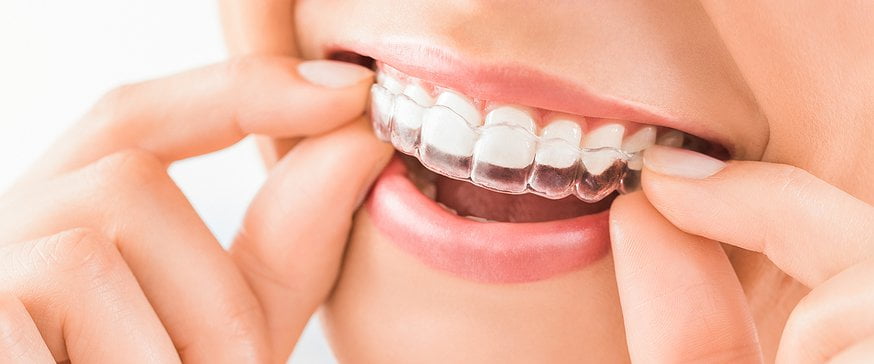The 3-Minute Rule for Legacy Orthodontics
The 3-Minute Rule for Legacy Orthodontics
Blog Article
Some Known Questions About Legacy Orthodontics.
Table of ContentsThe Ultimate Guide To Legacy OrthodonticsLegacy Orthodontics for DummiesThe 45-Second Trick For Legacy OrthodonticsThe Best Strategy To Use For Legacy OrthodonticsThe smart Trick of Legacy Orthodontics That Nobody is Talking About
In enhancement, we supply flexible treatment routines, adaptable settlement options and a fun, satisfying experience.An orthodontist is a dentist educated to identify, stop, and treat teeth and jaw irregularities. Orthodontists function with individuals of all ages, from kids to adults.
Malocclusion, or misaligned teeth, can bring about dental issues, including dental cavity, gum condition, and hard or excruciating eating. However not everybody is birthed with straight teeth. If you have a poor bite or big rooms between your teeth, you may want to consult a dentist focusing on orthodontic treatment.
The Of Legacy Orthodontics
( Picture Credit Rating: DigitalVision/Getty Images) Orthodontists make use of taken care of and removable dental devices, like braces, retainers, and bands, to alter the placement of teeth in your mouth. Orthodontic therapy is for dental abnormalities, consisting of: Misaligned teethBite problems, like an overbite or an underbiteCrowded teeth or teeth that are also much apartJaw misalignmentThe goal of orthodontic treatment is to boost your bite.
A healthy bite ensures you can consume, chew, and talk effectively. While you could consider orthodontists as primarily for children or teens that require braces, they can correct dental troubles at any type of age. Orthodontists attend university, dental college, and orthodontic school. After college graduation, they invest 2 or 3 years in an orthodontic residency program.
, yet not all dental experts are orthodontists. They concentrate on two areas: Exactly how to correctly and safely relocate teeth Just how to appropriately assist development in the teeth, jaw, and faceOnce an orthodontist has actually finished training, they have the alternative to become board licensed.
Unknown Facts About Legacy Orthodontics
Misalignment, or malocclusion, is the most typical reason people see an orthodontist. It is hereditary and is the outcome of size distinctions between the top and reduced jaw or in between the jaw and teeth. Malocclusion leads to tooth congestion, an askew jaw, or uneven bite patterns. Malocclusion is typically treated with: Your orthodontist affixes steel, ceramic, or plastic square bonds to your teeth.
If you have just minor malocclusion, you might have the ability to use clear dental braces, called aligners, as opposed to typical braces (https://www.blogtalkradio.com/legacyortho). Some individuals require a headgear to help move teeth into line with pressure from outside the mouth. After braces or aligners, you'll require to put on a retainer. A retainer is a customized tool that keeps your teeth in area.
They can produce added space in the mouth without having to pull teeth. Orthodontists use wires, surgical screws, or plates to sustain your jaw bone.
You might need to see an orthodontist if you have: Crowding or not sufficient area for every one of your teethOverbite, when your top teeth come by your base teethUnderbite, when your bottom teeth are as well much forwardSpacing or problems with gapsCrossbite, which is when your top teeth fit behind your base teeth when your mouth is closedOpen bite or an upright space in between your front base and top teethMisplaced midline, when the center of see page your base and upper teeth don't align Dealing with an oral malocclusion can: Make attacking, eating, and speaking easierImprove the symmetry of our face and your general appearanceEase discomfort from temporomandibular joint problemsDifferent your teeth and make them much easier to clean, assisting stop tooth degeneration or tooth cavities It's often a dental professional who initially notices misaligned teeth throughout a regular examination.
Top Guidelines Of Legacy Orthodontics

Throughout your first orthodontic consultation, you'll likely have: An oral examPhotos taken of your face and smileDental X-raysPanoramic (360 level) X-rays of your face and headImpressions to produce molds of your teethThese examinations will certainly aid your orthodontist understand exactly how to proceed with your therapy. orthodontics. An orthodontist is a dental professional who's had training to treat your teeth and jaw
Orthodontists may perform surgery, exams,X-rays,and more to help you achieve a much more comfy, healthier smile. An orthodontist is concentrated on your bite, so something like a broken tooth would be dealt with by a dental practitioner. Orthodontists are dentists but not all dental practitioners are orthodontists. Orthodontists are focused on your bite, or the way your teeth fit with each other, and the straightness of your teeth.
Ever before asked yourself exactly how celebrities constantly seem to have completely aligned teeth? Orthodontists are dental experts who focus on correcting abnormalities in the teeth and jaws.
All About Legacy Orthodontics

While dental braces are the most commonly acknowledged orthodontic therapy, orthodontists have a diverse toolkit at their disposal. The particular approach selected relies on the extent of the case, the patient's age, and private choices. These tried-and-true dental braces utilize a system of braces bound to the teeth and linked by cords.
Clear aligners, like Invisalign, are a prominent option for individuals looking for an extra very discreet treatment choice. These detachable trays are tailor-made to progressively change the teeth's setting. Headwear may be used in combination with braces or aligners to apply extra targeted pressures, especially for fixing jaw inconsistencies. In situations of narrow jaws, palatal expanders can be utilized to produce room for proper tooth positioning.
Report this page